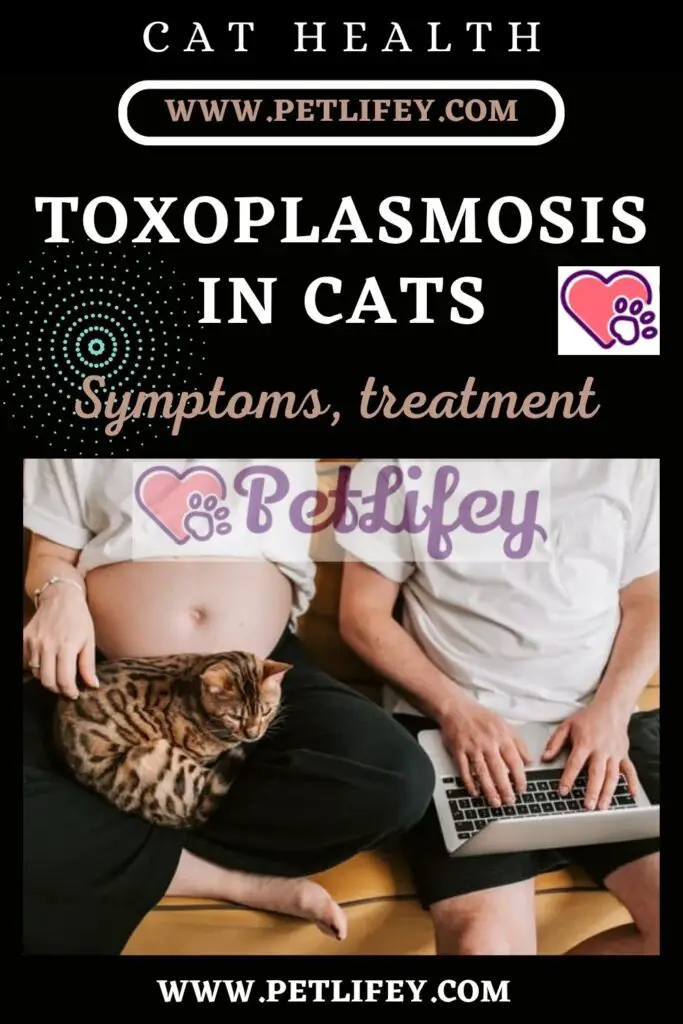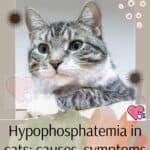
How to recognize if a cat has toxoplasmosis and prevent the risk of contagion.
What is Toxoplasmosis

Toxoplasmosis is a parasitic disease caused by the Toxoplasma gondii parasite. It can affect both humans and animals and is especially dangerous during pregnancy.
In people it can cause various effects, such as a flu-like state, muscle aches, lymphadenopathy, rare cases where it can cause eye pain, and severe symptoms in people with weak immune systems leading to seizures and motor coordination problems.
The danger of transmission of toxoplasmosis comes mainly from raw meat and cat feces.
The cat with toxoplasmosis
It is difficult to recognize toxoplasmosis. Being an asymptomatic disease it can reveal itself in different forms. According to statistical data, around the world there are 10% of infected cats among which 15% are carriers. Unlike other animal species and humans, the cat is the only host in which parasites reproduce.
The cat can get toxoplasmosis from eating contaminated rodents, birds, or eating raw meat. Stray cats or cats that live outdoors are more prone to contracting this disease.
Toxoplasmosis has several stages including the development of eggs (oocysts) within the cat’s nervous, muscular and visceral tissue. Oocysts can be expelled into the fa and are the most dangerous as they can survive for a year in a humid place.
Recognizing the cat with toxoplasmosis
It is difficult to identify toxoplasmosis which can be confused with other diseases. The most common symptoms are fever, loss of appetite and weight loss.
To these symptoms are added diarrhea, difficulty in breathing, apathy, lowering of the immune defenses and in the worst cases uveitis and haemorrhages to the retina.
It is very difficult to understand at first glance if the cat is affected by this disease. Blood tests done by the vet are needed to determine if the cat has toxoplasmosis.
Stool analyzes are not reliable throughout the course of the disease.
Dangers of toxoplasmosis for cats
In case there is a positive outcome, toxoplasmosis can become dangerous for the cat if there are other infections such as Feline Viral Immunodeficiency (FIV) or Feline Leukemia (Felv), as it worsens the symptoms.
The disease puts cats with low immune defenses and kittens at risk who can become infected with breast milk or through the placenta during gestation. In this case, deaths of the puppy from liver or lung diseases may occur.
How to treat a cat with toxoplasmosis
Once toxoplasmosis has been diagnosed, a pharmacological treatment will be outlined which usually has a good outcome.In fact, if the cat is in good health and does not have other pathologies, the disease does not involve many risks.
The treatment is based on the administration of antibiotics, the active ingredient of which is clindamycin, reaching up to two weeks of therapy. However, no anti-Toxoplasma drug can completely remove the parasite from the cat and relapses are therefore common, especially in immunosuppressed specimens.
Additional treatment with other medications may be introduced based on the cat’s symptoms to facilitate healing.
It is always recommended to intervene as soon as possible to avoid collateral and in some cases irreversible damage.
In fact, the cat could suffer neurological damage as a result of the infection.
During the treatment, the cat must be kept calm, in a warm environment and away from noise so that he can recover and overcome the disease by resting.
During the hospital stay, the litter box must be handled with gloves and disinfected. Wash your hands thoroughly after the procedure and disinfect them.
Preventing toxoplasmosis in cats
Toxoplasmosis is prevented through various measures, both from a hygienic and nutritional point of view.
- The cat’s diet must be based on canned foods and kibble, so that it has all the necessary substances.
- Avoid giving your cat raw foods that are not effective. Always cook meat before feeding it to the cat
- The cat must be vaccinated. If the animal lives indoors, it is better to avoid it coming into contact with other specimens living outside. However, if he is vaccinated and healthy, for which he has high immunity, and has not come into contact with other animals, it is unlikely that he will have toxoplasmosis.
- Avoid the cat being in contact and using the same litter box as an infected cat.
- Prevent the cat from chasing prey such as birds or mice outside. A bell around the cat’s neck helps to keep prey away.
Toxoplasmosis danger for pregnant women
Toxoplasmosis is one of the rare diseases that can be transmitted from animals to humans, called zoonoses. it is not a dangerous disease except for pregnant women.
To avoid contagion it is preferable to wash the cat’s litter box with gloves, always disinfect your hands after the operation. Avoid touching residual grounds or earth and sand in contact with stray cats with bare hands.
Pregnant women need to be extra careful by avoiding eating raw meat, fruits and vegetables that have not been washed well.
It is possible to carry out a serological test on the house cat to be calmer during the gestation period.
The first three months of pregnancy are the most at risk, that is, during the formation of the embryo. The consequences can be severe, such as general nerve damage, hydrocephalus, blindness, and microcephaly.






